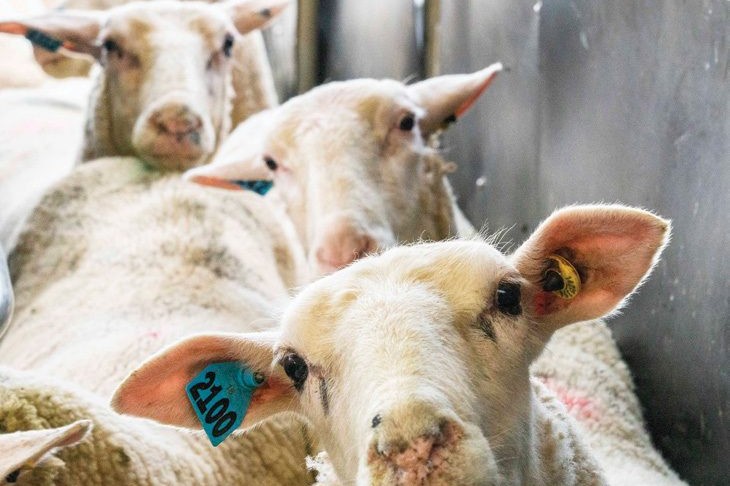THE SHEEP MILKING INDUSTRY HAS jumped the hump from fringe to full-on over the last couple of years.
“We’re going through a strong growth phase and there are interesting things set to happen,” Craig Prichard, SheepMilkNZ says.
Over the past two years the number of farms has doubled to 36, milking an estimated 20,000 ewes. Milk flow over the same period has more than tripled to 5.3 million litres, reflecting the continual development of milking genetics, feeding and management.
The 2021-22 season kicked off with 13 new conversions established by either Spring Sheep Milk Co or Maui Milk, the two big players in the industry.
Spring Sheep is a joint venture between marketing and investment company SLC and Pamu.
Maui Milk is a 60/40 joint venture between Super Organic Milk Co, a Chinese investment and marketing company, and Maori trust Waituhi Kuratau.
The industry is predominantly based in the greater Waikato region, although some farms are being developed further south which has led Spring Sheep Co to expand its collection run into Wairarapa.
In the South Island, Canterbury is the main growth hub. There are five sheep-dairying farmers but another five are making the switch for the 2022 season.
Most sheep dairies are seasonal producers, milking for 210-250 days, although there are now year-round operations supplying milk for yoghurt and cheese makers.
“That’s a significant step in the development of the industry,” Prichard says.
Processing capacity is growing. Spring Sheep and Maui process all milk at the Food Waikato drier facility near Hamilton. Capacity doubled in time for the start of the new season with installation of a new drier.
Canterbury sheep dairy owners and entrepreneurs Matt and Tracey Jones are progressing plans for a milk drier plant in Ashburton.
The average farm gate price is about $2.75-$3.00/litre ($15kg/milksolids), the variation dependent on the market supplied and transport costs, if deducted.
At an overview presented at this year’s sheep milking industry conference in May, Prichard said returns to date from sheep milk conversions across the Waikato were encouraging, despite the hefty costs of establishing sheep milking sheds and infrastructure.
Based on the Maui farmgate figure of $17kg/MS, sheep dairy farmers milking 600-1000 ewes, averaging 300 litres per animal, could expect an operating profit of about $8000/hectare by the fourth or fifth year of operation. That compared to the average dairy cow operating profit across the Waikato of about $2000/ha.
The sheep milking story will get better, Prichard says, with big developments expected by year-end.
“It’s a good story. The industry has moved to a new level, and we’ve had some great farmers join the crew.”
SWEET SPOT FOR MILKING FLOCKS
A FLOCK OF ABOUT 600 TO 1500 milking ewes and hoggets is the ideal size for a smaller scale Waikato-based owner-operator on highly productive Waikato country.
“There’s an optimal size or sweet spot just as there is for cow dairying. If you get to the point where you don’t recognise the animals as individuals, you’re probably losing attention to detail and the benefits of economies of scale,” Maui Milk’s breeding and genetics manager Peter Gatley says.
“I think we’ve learned from the very early days of the industry that bigger isn’t necessarily better and that many of the larger-scale operations bit off more than they could handle.”
Maui’s eight new-season suppliers are all starting off with flocks within the 500 to 900 ewe and hogget range. They’ll increase flock size and also fine-tune feeding and management to maximise the genetic potential of Maui’s specially bred Southern Cross ewes.
Gatley, formerly of dairy-owned genetics company LIC, says improved sheep milking genetics has been critical in growing the production and efficiency of Maui.
“We started with a tiny pool of East Friesian genetics… if we’d stuck with that it would have been like driving with a handbrake on.”
Maui imported French genetics and crossbred those with the best New Zealand milking genetics to produce the Southern Cross sheep. At the outset, seasonal per ewe production of 150 litres was regarded as good but that had steadily increased, and 300 litres was now regarded as an attainable figure.
“That’s a good and realistic target for an across-mob average and beyond that to 350 litres. There are significant production gains to be made before it flattens off.”
He says the industry needs to keep focused on free-range and pastoral-based production, rather than the intensive barn-based systems of overseas producers.





